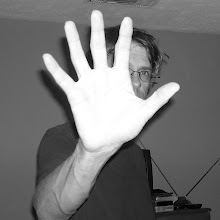Well, I've been out of touch for some time and I apologize.
The twentieth anniversary of
Twin Peaks is Thursday (4/8) and I had hoped to put together something to commemorate the occasion but it just isn't going to happen. But, you know, 2010 marks the twentieth anniversary
year of
TP so there is still time to write a few things about the show. (I've been asked by a few people to reprint my "Dreams of Deer Meadow" piece from
Wrapped in Plastic, but the essay is too long and really won't work in this medium. Still, I have thought about rewriting the piece in condensed form to make it more appropriate as a blog post. That's my plan right now. Let me know what you think.)
OK, I've been watching and reading lots of stuff. So, a few brief comments. (Please post or email if you would like to discuss any of these things in greater detail.)
TV:
LOST is amazing. No show in history has been brave enough to depict two ongoing alternate realities. I marvel at the two parallel plots every week. Of course, there has to be some connection between the two. Now that Desmond is back maybe we will find out what that connection is. Desmond has always been a unique character (remember: "the rules do not apply" to him). Could Desmond be experiencing
both realities at once? I think this might be a cool idea and one that fits nicely with his season three story, "Flashes Before Your Eyes." (Not to mention season four's "The Constant.") (Let's hope the re-appearance of Desmond also means the return of Daniel Faraday (who surely knows what's going on, right?).)
I've started watching
Justified on FX. The series features smart writing, atypical storylines, and a fine lead actor, Timothy Olyphant, who is superb in the role of Raylan Givens.
Justified has been a pleasant surprise.
The Pacific on HBO is also another riveting series. Clearly, a great amount of time, effort, and money has been put into the series. It shows--the production values are present in every scene. But, at the core, the fine writing and acting are what give the show its emotional resonance.
I don't watch
Caprica. I stopped watching
FlashForward. I was disappointed with
Big Love (the last season was rushed and hectic, and far less engrossing than seasons past).
But I tell you, I can't wait for
Treme from David Simon. It starts Sunday on HBO. If it is half as good as
The Wire it will be the best show on TV.
Comics:
I never thought a comic with the title,
Scalped, would appeal to me, but the Vertigo series from writer Jason Aaron (and illustrated, for the most part, by R.M. Guera) is one of the most complex, compelling and captivating comics I've ever read. The story is essentially a crime drama set on the modern-day Prairie Rose Indian Reservation in South Dakota. The FBI has placed an undercover agent, Dashiel Bad Horse, into the crime operation of Chief Red Crow. There are murders, drug deals and double-crosses. No one is completely innocent; no one is completely bad. I've finished the five graphic novels of
Scalped (collecting issues 1-29) and I may have to buy all the subsequent issues before the next collection comes out. I'm hooked -- immersed in the wonderfully-plotted story and thoroughly-developed world Aaron has created. He is masterfully using the strengths of the comic medium: devoting time to flashbacks, overlapping simultaneous storylines from issue-to-issue, and developing his background characters into significant players. Aaron is not beholden to any formulaic story structure. He pauses his story sometimes, suspending the major narrative for five or six issues to explore a side area of his milieu. But nothing in the series is extraneous or out-of-place. The pieces all come together. Trust me,
Scalped is a rewarding series.
Books:
I've been reading quite a bit. The most exciting book has been
Although Of Course You End Up Becoming Yourself by David Lipsky. This is essentially a book-length interview Lipsky did with David Foster Wallace in February of 1996, just as
Infinite Jest was published. Lipsky was assigned by
Rolling Stone to profile Wallace but his piece never made it to print. Lipsky, however, had taped virtually every waking moment of his five-day visit with Wallace, and those tapes are transcribed here. What an amazing book! I found myself highlighting sections and taking notes. Wallace discusses films, authors, TV and movies. Though the book is rather dated (they talk about some stuff that has virtually been forgotten by now) there are some sections that are invaluable to the Wallace scholar, particularly those sections about the writing, editing and publishing of
Infinite Jest. Wallace emphasizes over and over again how hard he worked on the book and compares the end of the experience (before he knew it was to be published or well-received) to a really good physical work-out: "There's this kind of tiredness that's real pleasant, and it's real sort of placid." Wallace knew that
IJ was good and clearly the book was a transformative experience for him. Lipsky's book is revelatory and no fan of David Foster Wallace should miss it.











